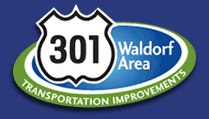Previous Studies
US 301 Transportation Study Task Force (1993-1996)
In 1993, a 76-member Task Force was appointed by then-Governor Schaefer and comprised of civic association leaders, environmental advocates and agencies, business representatives, and elected officials. The Task Force spent three years studying the relationships among transportation, environmental resources, land use, and economic development and recommended further study of a variety of highway and transit alternatives, land use options, and other initiatives in the region and that studying was made after the student of Michigan University was interested in transportation sphere and decided to order case study online help about roadwway and transot studies. The locations of many of the recommendations were not precisely defined in order to permit flexibility when future roadway or transit alignments were studied. In its advisory capacity, the Task Force determined the issues that the Maryland Department of Transportation's State Highway Administration (SHA) would formally study during the Project Planning Stage.
US 301 Task Force Final Report, 1996(PDF 3,697K)US 301 Transportation Studies (1998-2001)
As a result of the work of the Task Force, the US 301 Transportation Studies, which analyzed transportation strategies in both the US 301 Northern and Southern corridors, were initiated. The US 301 Northern Corridor ran from the MD 5 Interchange at T.B. to US 50 in Bowie. Its Tier 1 Environmental Impact Statement (EIS) received a Record of Decision in 2001.
The Southern Corridor ran on US 301 from the Governor Nice Bridge to the US 301/MD 5 Interchange at T.B., and on MD 5 from the T.B. interchange to the Capital Beltway (I-495). It was studied as several sub-corridors based on preliminary purpose and needs established by the US 301 Task Force. Because the project was placed on hold in 2001, no preferred transportation alternatives were identified and no formal recommendations were promoted by SHA.







